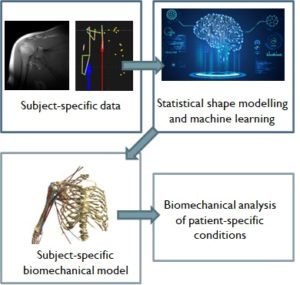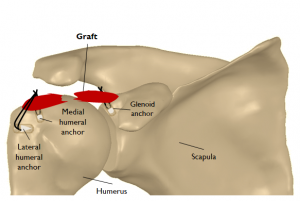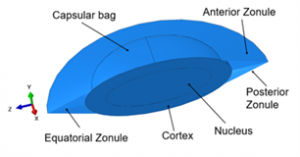Biomechanics @ IDMEC
Recent studies in Biomechanics

Subject-specific biomechanical modeling of the shoulder towards personalized medicine
The development of accurate, time-effective, and cost-effective methods to obtain subject-specific biomechanical models is crucial for their application in the clinical practice. However, a comprehensive approach for the generation of subject-specific MSK models, especially of the shoulder, whose pathologies and treatment strategies are still not fully understood, is still illusory. Considering musculoskeletal modeling, statistical shape modeling, and machine learning methodologies, the main aim of this work is to move biomechanical modeling of the shoulder towards personalized medicine and promote its large-scale application in the clinical setting.
Supervised by Carlos Quental and João Folgado

Computational modelling of the Human spine ligaments under healthy and implanted conditions
Low back pain (LBP) is an emerging problem in society, often leading to spinal fusion surgeries. The aim of this work is to understand how ligament degeneration links with LBP by determining the role of each ligament per movement, pre- or post-implantation of a fusion cage. Using finite element simulation, it is possible to distinguish potential reasons for post-surgical complications.
Supervised by André Castro and Paulo Fernandes

What is the Ideal Position of the Shoulder for Graft Fixation in Arthroscopic Superior Capsular Reconstruction? A Computational Analysis
A computational analysis was designed to determine the role of the fascia lata graft in restoring shoulder stability in arthroscopic superior capsular reconstruction for irreparable rotator cuff tears. Shoulder stability was better restored when the graft was fixed with the shoulder at 5º to 10º of abduction, and in 10º of internal rotation, and when the long head of the biceps was preserved.
Supervised by Carlos Quental and João Folgado

Computational modelling of the Human eye crystalline complex under healthy and diseased conditions
The condition of pseudoexfoliation, prevalent in up to 30% of individuals after 60 years old, can lead to subluxation or dislocation of the lens, due to the weakening of the supporting zonules. As the biomechanical effects of this disease remain poorly studied, finite elements of the human eye crystalline complex are developed to evaluate the differences between healthy and diseased conditions.
Supervised by André Castro and Paulo Fernandes
Novel biomechanical models for swimming activities
Current biomechanical models for swimming activities inherit the shortcomings in experimental kinematic and kinetic data acquisition in the water, required for their use, thus exhibiting limitations not only in the representation of the human body kinematics in some swimming activities but also in the evaluation of the internal forces in the human body. This work aims at addressing major shortcomings in the development and application of biomechanical models for swimmers and proposing novel approaches to advance the state-of-the-art.
Supervised by Jorge Ambrósio, Carlos Quental, and João Paulo Vilas-Boas
Publications
-
 A multibody methodological approach to the biomechanics of swimmers including hydrodynamic forces
A multibody methodological approach to the biomechanics of swimmers including hydrodynamic forces(2023) Carlos Quental, Francisca Simões, Mariana Sequeira, Jorge Ambrósio, João Paulo Vilas-Boas, Motomu Nakashima.
-
 Design and validation of a finite element model of the aponeurotic and free Achilles tendon of the permeability-porosity relationship in triply periodic minimal surfaces scaffolds
Design and validation of a finite element model of the aponeurotic and free Achilles tendon of the permeability-porosity relationship in triply periodic minimal surfaces scaffolds(2023) Pedro Diniz, Carlos Quental, Pedro Violindo, João Gomes, Hélder Pereira, Gino Kerkhoffs, Frederico Ferreira, João Folgado.
-
 Lumbar intervertebral disc segmentation for computer modeling and simulation
Lumbar intervertebral disc segmentation for computer modeling and simulation(2023) R Matos, PR Fernandes, N Matela, APG Castro.
-
 Kinematics and dynamics of planar multibody systems with fully Cartesian coordinates and a generic rigid body
Kinematics and dynamics of planar multibody systems with fully Cartesian coordinates and a generic rigid body(2023) Ivo Roupa, Sérgio B. Gonçalves, Miguel Tavares da Silva.






